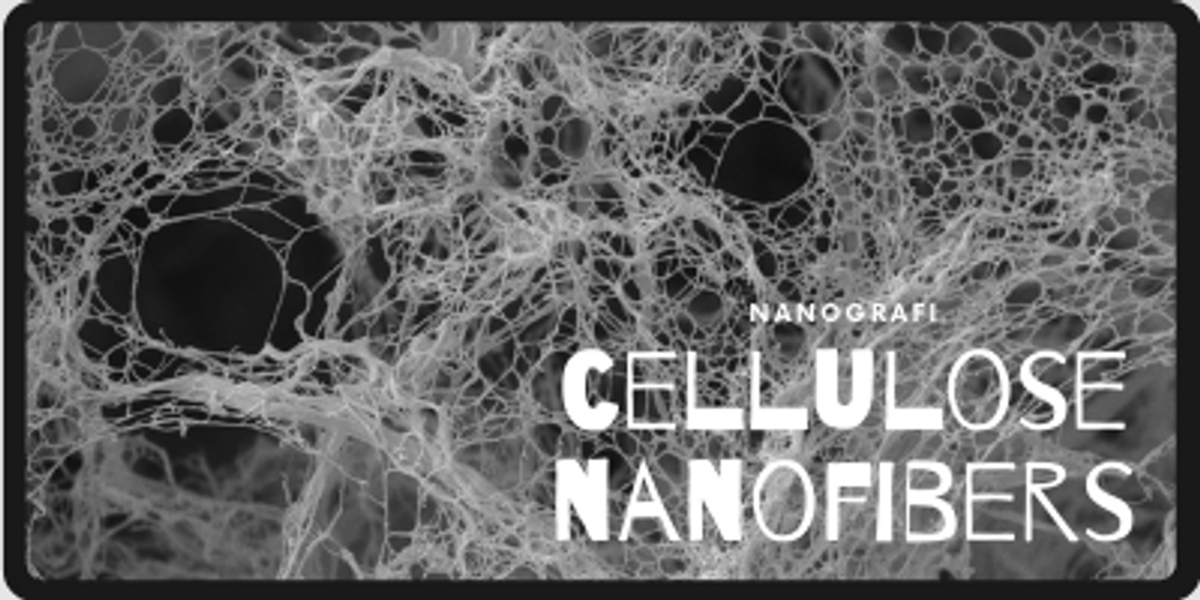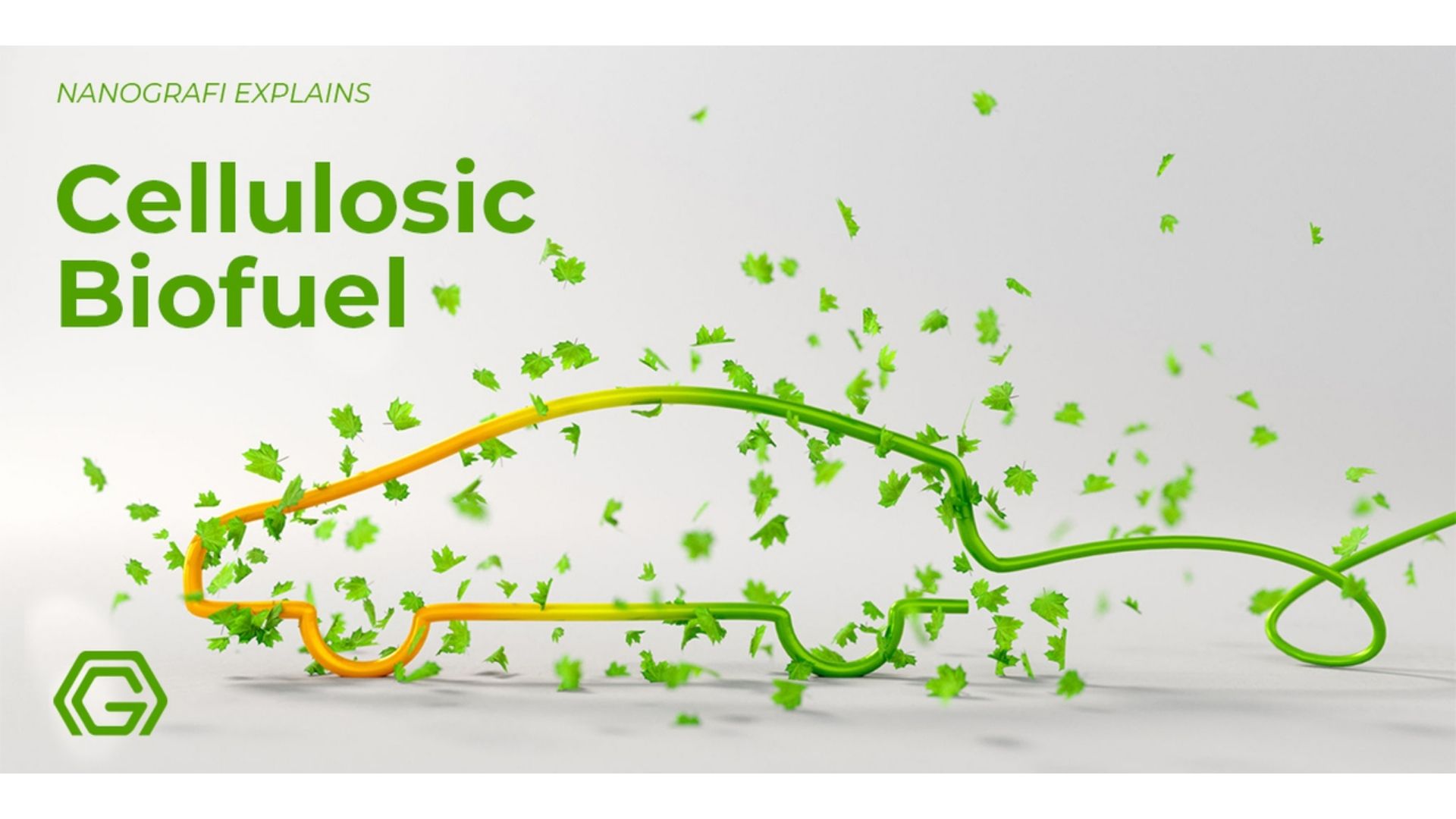Cellulose Nanofibers
Cellulose occurs abundantly and naturally as raw material on Earth amounting billions of tons made by many different plant species.
Technically, cellulose is a cheap, light-weight, thermally stable organic compound and one of the most common agents to meet the standards of sustainable chemistry since it is naturally biodegradable as well as renewable. Within plants, cellulose fibers are produced by microfibrils that are highly crystalline entity.
Introduction
In the past years, cellulose has drawn a lot attention due to its considerable impact on areas like flexible electronics and displays, textiles, sensors, laminates, pharmaceuticals coatings, food and actuators 1.
Chemically, cellulose fibers comprise a chain of hundreds to thousands of D-glucose in a linear configuration. They are regarded as the important structural members of different species of algae and the walls of green plants cells. The walls of plants cells are composed of cellulose microfibrils with crystalline structure with a width of about 93 nm containing some 20 to 40 fully extended cellulose chains which behave like strengthened steel in the fabric of the walls and are surrounded by polysaccharides including hydrophobic non-crystalline lignin and hemicellulose which are nanocrystalline structures too. Therefore, it should be taken into consideration that cellulose-based nanostructures like cellulose nanofibers are originally biomolecules and abundantly found on Earth as well as being synthesized naturally in larger quantities through the natural photosynthesis procedure 2.
Properties of Cellulose Nanofibers
Cellulose nanofibers (CNFs) are typically as long as several micrometers and 5 to 20 nm wide. They are not soluble in aqueous solutions but are highly dispersed to make a suspension with a given viscosity. Cellulose nanofibers have the ability to disperse meaning there is a possibility of spinning the suspension. They also possess anisotropic physical characteristics. The highly crystalline cellulose nanofibers elastic modulus, which is known as the ratio of their stress to the corresponding strain, is 150 GPa and 50 GPa for longitudinal and transverse directions, respectively. Cellulose nanofibers are generally too short to be applied in environmentally friendly composites such as CNF reinforced composites, whereas they have excellent mechanical properties. In fact, the mechanical properties of nanofibers improve when they are aligned so finely and perfectly. This alignment of nanofibers has been reported in many research projects using electric field, shear force, magnetic field and mechanical stretching. Among these techniques, it is very simple to achieve some sort of orientation based on shear force with resulting products in larger and industrial scales. With regard to cellulose nanofibers suspension quality, spinning them appears to be an efficient way to obtain CNFs. In addition to spinning, mechanical stretching is also an efficient way to get cellulose nanofiber with high mechanical properties and improved alignment 1.
Cellulose as a sustainable and renewable macromolecule has drawn significant attention and is a good motivation for a lot of researchers to study cellulose-based materials mainly in nanoscale as nanomaterials with practically new applications. Cellulose-based nanomaterials, also termed as nanocellulose, are categorized as nanocrystalline cellulose (NCC), cellulose nanofiber, bacterial nanocellulose and nanofibrillated cellulose (NFC). These nanostructured cellulose materials possess different properties in particle size, morphology and crystallinity induced by the different extraction method and different source 3.
Preparation of Cellulose Nanofibers
There have been developments in bleaching and pulping technologies on the way through isolating and purifying cellulose from plants. Environmentally friendly and cost-effective methods and processes have been suggested in order to introduce the most efficient and optimized pulping and bleaching methods to obtain cellulose from wood and plants to be applied in numerous areas. The main process that is used around the world is known as Kraft or sulfate pulping method which makes it possible to produce highly purified wood cellulose as well as biomass energy simultaneously. The biomass energy is generated by electric power generators talking the advantage of condensation prior to reductive incineration of lignin-rich pulping effluent 2. Cellulose nanofiber production through pulping is considered as a novel application for wood cellulose and isolated and purified from wood chips sized 0.02 to 0.04 nm in width and 1 to 3 mm long and consist of so many cellulose microfibrils. Cellulose nanofibers have are known to have the width of less than 100 nm and mainly originate from cellulose microfibrils. There has been extensive investigation on the preparation of cellulose nanofibers from wood as well as other plants as a collaboration among industries, scientific sector and governments. The enzyme hydrolysis is known as the chemical preparation of cellulose nanofibers. Accordingly, the area of the fiber that is amorphous is destroyed in order to isolate nanocrystals in acidic environment. As an example, sisal fiber is treated with sulfuric acid (60%) for half an hour to extract the nanocrystals at 45°C.
To get more information about conversion of cellulose into biofuel,
you can read our blog post here.
Applications of Cellulose Nanofibers
Interestingly, cellulose nanofibers have a broad range of applications in areas as food industries, medicine and so forth. The medical applications include tissue engineering, wound healing, medical implants and delivery of bioactive molecules. Moreover, freeze-dried nanocellulose as aerogels are employed in napkins with sanitation purposes, diapers and wound dressing, composite coating agent in cosmetics, tablets for treating intestinal disorders, screening of biological compounds, nucleic acid encoding, leukocyte free blood transfusion, an excipient in pharmaceutical compositions, photo-reactive noxious substance purging agent and Elastic cryo-structured gels. In food industries, cellulose nanofibers are used low calorie replacements for carbohydrate additives, suspension stabilizers and flavor carriers. They are also used for crushes, wafers, soups, fillings, gravies and pudding production. The properties of cellulose nanofibers make them interesting agents to reinforce plastics. They improve the mechanical properties of starch-based matrices, thermosetting resins, rubber latex, soy protein and so on. In addition to this, composites of hybrid cellulose nanofibrils-clay minerals exhibit favorable gas barrier and mechanical properties. Cellulose nanofibers applications as composites can be in coatings and films as well as paints, foams and packaging. CNFs also have applications in hygiene and absorbent products such as antimicrobial films, super absorbent polymers, non-woven products, super water absorbent material, tissues and absorbent structures. Other applications are in manufacturing highly scattering material for ultra-white coatings, High-flux membranes, battery separators, reinforcement of conductive materials, loud-speaker membranes, computer components, lightweight body armor and ballistic glass, capacitors and Corrosion inhibitors.
Conclusion
With regard to green chemistry standards, biodegradability and biocompatibility of cellulose nanofibers, a broad range of applications have been introduced in the areas such as medical science, food industries, composite materials and industrial sector. Huge amounts of cellulose are generated by plants every year through a completely natural process as photosynthesis making the cellulose-based materials and nanostructures promising agents for increasing applications.
To discover the latest news from nanotechnology, you can visit Blografi.
References
1. Kafy, A. et al. Cellulose long fibers fabricated from cellulose nanofibers and its strong and tough characteristics. Sci. Rep. 7, 1–8 (2017).
2. Isogai, A. Review Development of completely dispersed cellulose nano fibers. 94, 161–179 (2018).
3. Moohan, J. et al. Cellulose nanofibers and other biopolymers for biomedical applications. A review. Appl. Sci. 10, (2020).
Recent Posts
-
Turning Noise into Power: Energy Harvesting with Piezoelectric Nanogenerators
Ambient acoustic energy, once an untapped resource, is now being converted into sustainable electric …5th Mar 2025 -
Holey Super Graphene in Li-ion Batteries: Next Generation of Energy Storage
Holey Super Graphene (hG), also referred to as “holey graphene,” is redefining li-ion ba …7th Feb 2025 -
Future Communication with 5G Technology and Advanced Materials
5G technology opens the doors to a new era in communication with faster connection speeds, low laten …6th Feb 2025






